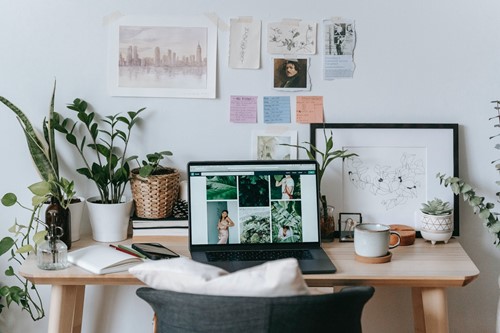Email: TraceyHutchinson@churchillprop.com

Adding height variation to your plant collection can enhance the entire look of the collection. Even if you have your potted plants on a shelf, table or other surface off of the floor, some plants definitely benefit from sitting up higher. There are plenty of tabletop plant stands available on the market but they’re also easy to build yourself. Here are the materials and steps needed to make your very own miniature plant stands.
Square wood dowel
Dowel pins
Wood glue
Wood stain
Sealer
Rag
Plant pot
Measuring tape
Hand saw
Drill & drill bit
Sandpaper or power sander
Clamps
The very first thing you need to do is measure the diameter of the pot you want to use in the stand. If it’s a tapered or round shape, measure both the bottom and the widest point (whether at the top or in the middle).
Measure and cut the wood dowel so that you have 4 “legs.” For the crosspieces, you’ll need one long piece and two smaller pieces to make the cross.
Mark where the drill holes will go. Add drill holes to the center and either end of the crosspieces and into the middle of each side support. Make the holes approximately 1/2 inch deep.
Use glue and dowels to connect the crosspieces. Add a bit of glue to the end of the dowel and fit it into each hole, clamping the pieces together to make sure it’s a firm fit. Once connected, you should have an X shape.
Now add dowels into each end of the cross and secure them with glue. Attach the leg pieces by fitting the dowels into the holes you drilled in the center of each support. Use the clamp to hold everything steady while gluing.
Make sure the glue is dry and check for any sign of wobbling. If you have some slight unevenness in the legs you can sand down the longest one or more to even them out. If there is a dramatic difference, you may need a hand or hack saw to correct it.
Sand all the surfaces thoroughly to prepare for the stain or paint you want to use. Scrape off any extra dried glue you find, since it won’t take the stain or paint.
Once you’re finished sanding and prepping, paint the visible surfaces and add a coat of seal afterward.
Grab your plant pot and test out the stand. Check again for any signs of unevenness or wobbling and adjust accordingly. Experiment to find the best looking spot for your new tabletop plant stand to complement the plant itself as well as offer it the maximum light and air flow.

A home is not a home because of its room dimensions or the color of the walls. It is about how you feel when you walk through the front door and the way you can instantly envision your life unfolding there. This is about more than real estate. It is about your life and your dreams.
You deserve to be represented by a professional who knows the local market, cares, puts you first, communicates and negotiates well, is knowledgeable, competent, honest and accessible!